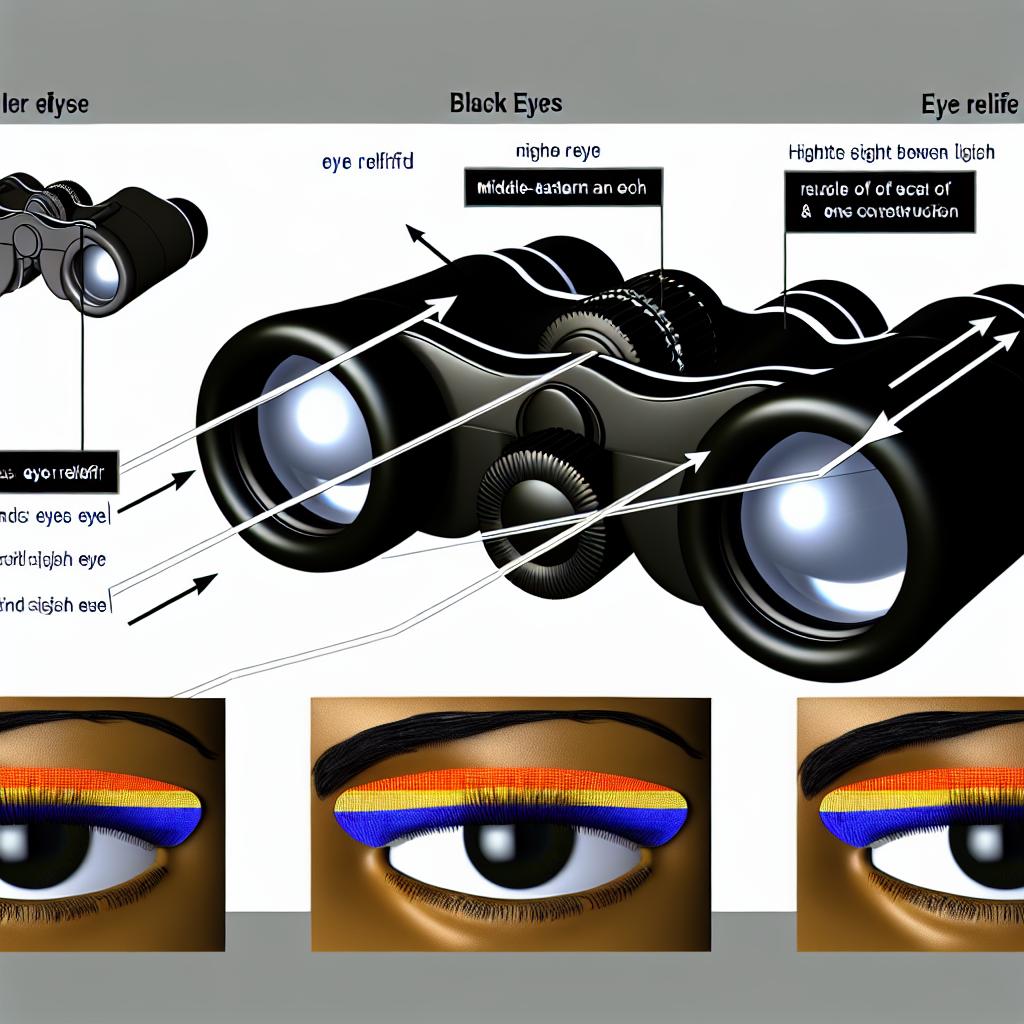The Importance of Eye Relief in Binoculars
Eye relief is an essential factor when choosing binoculars, particularly for individuals who wear glasses. Eye relief refers to the distance from the outer surface of the eyepiece lens to the point where the exit pupil is formed, which is the optimal distance for seeing the full field of view. Understanding eye relief is crucial to maximizing the utility and functionality of binoculars, thus enhancing your overall viewing experience.
Understanding Eye Relief
Eye relief, measured in millimeters, typically ranges between 10mm and 20mm. People who wear eyeglasses need to opt for binoculars with longer eye relief, usually 15mm or more, to ensure they can achieve a comprehensive viewing experience without removing their glasses. This attribute is vital because inadequate eye relief can lead to a restricted field of view where the edges of the image might appear cropped or blurred. Ensuring sufficient eye relief allows for the entire image to be visible without discomfort or the need for continuous adjustments.
When the eye relief is too short, observers might need to press their eyes closer to the eyepieces, which could be impractical for spectacle wearers. This leads to a suboptimal viewing experience where users may find themselves missing out on peripheral details and may lead to unnecessary fatigue due to constant maneuvering to capture the whole image. As a rule of thumb, longer eye relief provides a better experience for those wearing glasses, as it accommodates the extra distance glasses introduce between the eyes and the binocular lens.
Why Eye Relief Matters
Eye relief is critical for several reasons. Primarily, it ensures comfort and minimizes eye strain during prolonged use. Insufficient eye relief forces users to constantly adjust their head position to see the full image, which can lead to inconvenience and exhaustion over time. Furthermore, appropriate eye relief maintains high image quality by ensuring users can see the outer edges of the field clearly without distortion. The ability to view the entire field of view effortlessly results in a more immersive and satisfying watching experience.
For instance, consider bird watchers who spend extensive hours observing birds. Insufficient eye relief would result in consistent repositioning, leading to missed opportunities in observing quick and intricate movements. Similarly, during astronomical observations, where detail and duration are critical, inadequate eye relief could hinder the ability to track celestial objects smoothly.
For those seeking to remedy such issues, modern binoculars often come equipped with advanced features that cater to varying levels of eye relief. Features like adjustable eyecups can often be found, which cater to both glasses wearers and those without, ensuring versatility and enhanced comfort during use.
Practical Considerations
When testing binoculars, assessing eye relief is crucial. This evaluation involves holding the binoculars at the recommended distance and confirming that the entire field of view is discernible. High-quality binoculars often include adjustable eyecups that can be rotated or folded down, offering additional accommodation for eyeglass wearers. Such customization is crucial to improve overall viewing comfort, especially for an extended viewing period.
To ensure the optimal selection of binoculars based on eye relief, potential buyers should experiment with different models, comparing not just the specifications on paper, but the actual comfort and ease of view during practical use. This can mean visiting a store in person and trying out various binoculars to feel which option best aligns with personal preferences and requirements.
It is notable how the evolution of optic technology has incorporated the understanding of user comfort, influencing modern binocular designs to prioritize adaptable features like adjustable eyecups. Whether it is for casual use, wildlife observation, or specific research purposes, eye relief serves as a pivotal factor contributing to effortless, rich, and clear views without unnecessary strain.
Conclusion
In conclusion, eye relief is a crucial specification to evaluate when selecting binoculars. It plays a substantial role in user comfort and the ability to fully enjoy the capabilities offered by binocular optics. Always take into consideration personal needs, such as the necessity of wearing glasses, when assessing binoculars for eye relief. Testing different models in real-life scenarios can greatly improve your likelihood of finding the most suitable binoculars for your needs.
Adhering to specific requirements for eye relief ensures that you won’t encounter any limitations related to field of view, thus maximizing your viewing potential and enjoyment. This consideration will allow a detailed and unobstructed view, enhancing the quality of experiences such as wildlife observation, outdoor adventures, or even indoor events.
For anyone keen on expanding their knowledge in selecting the right binoculars or delving deeper into optical technology and features, various resources offer expert insights and detailed guides. Stepping into the world of optics with a proper understanding of eye relief will ensure that the chosen equipment will serve optimally for years to come, delivering superior experiences across varied applications.
This article was last updated on: June 21, 2025


